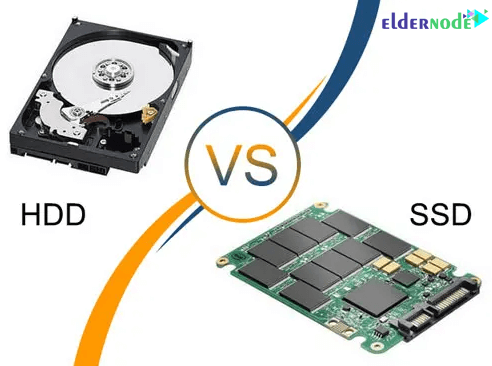Table of Contents
Introduction
In the vast realm of data storage solutions, the debate between Solid-State Drives (SSDs) and Hard Disk Drives (HDDs) remains a central topic of discussion. Both have their merits, but as technology advances and demands for faster, more efficient storage rise, the “Advantages of Solid-State Drives” become more evident. As digital ecosystems continue to evolve, individuals and businesses alike are gravitating towards SSDs, primarily due to the multitude of “advantages of a SSD.”
Diving deep into the world of data storage, we’ll explore how SSDs have marked their dominance and why they’re considered a leap forward from traditional HDDs. Their design, efficiency, and unparalleled speed have redefined what users can expect from their storage devices. If you’re on the fence about choosing between SSDs and HDDs, understanding the “Advantages of Solid-State Drives” might just tip the scales in SSDs’ favor.
By the end of this article, you’ll have a comprehensive understanding of SSDs’ superiority, and why they are increasingly becoming the standard for both personal and enterprise storage solutions.
The Evolution of Data Storage: From HDDs to SSDs
Hard Disk Drives (HDDs): A Historical Glimpse
Before appreciating the “advantages of a SSD,” we need to cast a glance at our starting point. Hard Disk Drives (HDDs) have held the fort in data storage for the longest time. Characterized by their spinning disks and read-write heads, they have traditionally offered large storage capacities at relatively low costs. However, their mechanical nature also meant they were slower, more vulnerable to physical shocks, bulkier, and power-intensive.
The Emergence and Advantages of Solid-State Drives
With technological advancements, the SSD made its groundbreaking entrance. Devoid of moving parts, SSDs utilize NAND-based flash memory, instantly presenting the “advantages of a SSD” over its HDD counterparts. They brought to the table faster data retrieval times, incredible durability, and a compact design. But that’s merely scratching the surface. As we delve deeper into the “Advantages of Solid-State Drives,” we’ll see how they’ve redefined storage standards, becoming an integral component of the modern computing ecosystem.
SSDs vs. HDDs: Breaking Down the Advantages
In today’s digital era, where data access speed and reliability are paramount, understanding the “Advantages of Solid-State Drives” over their HDD counterparts is vital. Among the numerous “advantages of a SSD,” speed and performance often stand out, distinguishing SSDs as the preferred choice for many.
H3: Speed and Performance: The Primary Advantages of a SSD
When debating the “Advantages of Solid-State Drives,” speed and performance are often the first to be highlighted. The unmatched speed of SSDs stems from their design, which doesn’t rely on spinning disks. This fundamental difference grants them several advantages over traditional HDDs.
H4: Swift Booting Times
One of the most immediately noticeable “advantages of a SSD” is its swift boot-up times. Unlike HDDs, where the system needs to spin up the drive’s disks, SSDs can access their data almost instantly. This results in significantly faster start-up times, allowing users to dive straight into their tasks without waiting.
Faster File Transfer Speeds
Another crucial “Advantage of Solid-State Drives” is their ability to handle large file transfers efficiently. Whether you’re moving a collection of photos, videos, or large datasets, SSDs can significantly reduce the time it takes, leading to improved workflow and less downtime.
Quick Application Load Times with SSDs
In a world where multitasking is the norm, the last thing users need is software lagging. Thanks to SSDs, applications, especially resource-intensive ones, load with impressive speed. This ensures a smoother, more responsive computing experience, further emphasizing the “advantages of a SSD” in contemporary computing environments.
The Durability and Design “Advantages of a SSD”
In the ever-evolving world of technology, SSDs have emerged as the pinnacle of durable design in data storage. When considering the “Advantages of Solid-State Drives” over HDDs, one can’t help but emphasize the robustness of SSDs. Durability isn’t just about longevity; it’s about the ability of a device to withstand wear, physical shocks, and the inevitable test of time.
No Moving Parts: A Robust Advantage
One of the fundamental “advantages of a SSD” lies in its design, which lacks moving parts. HDDs, on the other hand, utilize spinning disks and a moving read/write head, which can degrade over time or even fail due to physical shocks. SSDs, in their absence of such moving components, eliminate many potential points of failure. This makes them considerably less vulnerable to mechanical breakdowns, ensuring data integrity and a reduced risk of unexpected data loss.
Enhanced Shock Resistance
Accidents happen. From dropping a laptop to the vibrations during travel, storage devices inevitably experience some rough handling. Here, the “Advantages of Solid-State Drives” come to the forefront. Without delicate spinning disks, SSDs can withstand impacts far better than HDDs. This enhanced shock resistance ensures that data remains safe even when faced with physical challenges, making SSDs a favorite for those on the move.
Longevity and Reduced Wear
Wear and tear is a reality for any electronic device, but SSDs have an edge. Thanks to their flash memory structure, SSDs are designed for prolonged and intensive usage. While HDDs can suffer from fragmentation and wear over time, affecting their performance, SSDs manage data without such constraints. This leads to consistent performance and a longer lifespan. Recognizing this “advantage of a SSD,” many are making the shift, seeing it as a long-term investment in their data’s safety and device’s efficiency.
Efficiency and Silent Operations: SSDs Shine
In today’s fast-paced digital world, efficiency is the name of the game, and here, the “Advantages of Solid-State Drives” are clear and pronounced. SSDs, with their modern design and sophisticated tech, bring to the table a level of operational efficiency that traditional HDDs can’t match. Beyond the speed and durability, SSDs offer distinct benefits in terms of energy consumption and silent operations, cementing their status as the premier choice for storage solutions.
Energy Consumption: Another Advantage of a SSD
Every device and component in a computer setup consumes power, but not all do it equally. One of the defining “Advantages of Solid-State Drives” is their frugal energy consumption. Given their absence of spinning disks and moving parts, SSDs require significantly less power to operate compared to HDDs. This not only translates to savings on electricity bills, especially in larger setups and data centers, but also means laptops run cooler and their batteries last longer. By reducing power consumption, SSDs indirectly contribute to a greener environment and enhance device longevity.
Reduced Noise and Heat Output
Remember the hum or occasional buzz of an HDD in operation? SSDs have effectively silenced that narrative. Thanks to their solid-state nature, SSDs operate in near silence. They don’t have the moving parts that produce the characteristic noises of HDDs. Moreover, their efficient design ensures minimal heat output. This “Advantage of a SSD” is two-fold: firstly, it ensures a quieter working environment, ideal for setups where noise can be a distraction. Secondly, reduced heat generation means less strain on cooling systems and a lower risk of heat-related component damage. In environments where silence and temperature control are critical, the benefits of SSDs can’t be overstated.
More Than Just Speed: Other Notable Advantages of a SSD
When people think of the “Advantages of Solid-State Drives,” speed often dominates the conversation. However, there’s more to SSDs than just swift data transfer rates. They present a suite of benefits that enhance user experience, ranging from their innovative designs to their versatility. In the modern age, where devices are becoming sleeker and more compact, the “advantages of a SSD” in terms of form factor and integration capabilities are increasingly relevant.
Flexibility in Form Factor and Size
The evolution of storage devices, particularly the shift from HDDs to SSDs, is not just about performance metrics. It’s also about adapting to the changing demands of technology and user preferences. One of the clear “Advantages of Solid-State Drives” is the flexibility they offer in terms of form factor and size.
Portability and Compact Nature of SSDs
Unlike the bulky HDDs that come with size constraints, SSDs are inherently more compact. This compactness, a notable “advantage of a SSD,” allows for greater portability. Whether it’s an external SSD being used for swift data transfers or backups, users appreciate the convenience of carrying a pocket-sized storage powerhouse. Moreover, the weight reduction in devices, be it laptops or gaming consoles, due to SSDs enhances the user experience by ensuring they’re more ergonomic and travel-friendly.
Easy Integration in Modern Tech Devices
Beyond personal computers and laptops, the “Advantages of Solid-State Drives” extend to a myriad of modern tech devices. From ultrabooks to tablets, from gaming consoles to professional cameras, SSDs integrate seamlessly, providing quick storage solutions. The advantage of a SSD here lies in its ability to fit into diverse device architectures without compromising on performance. As tech trends lean towards slim, lightweight, yet powerful devices, the SSD’s easy integration proves invaluable.
The Future of Storage: What’s Next After SSDs?
The undeniable “Advantages of Solid-State Drives” have set new standards in storage technology. With SSDs becoming commonplace and a preferred choice for most users due to their numerous advantages, one can’t help but wonder: What’s the next leap in storage technology? As we look beyond the immediate “advantages of a SSD,” it’s crucial to keep an eye on upcoming innovations that could shape the future landscape of data storage.
Upcoming Innovations Following the “Advantages of a SSD”
As SSDs continue to reign supreme in the present, researchers and tech giants are already pushing the boundaries, looking for the next significant advancement that could potentially offer even greater “Advantages of Solid-State Drives” or perhaps introduce a wholly new paradigm.
Predicting the Next Big Thing in Storage Tech
While SSDs have undeniably reshaped the storage landscape, the tech world is abuzz with speculations about what’s next. Some foresee the expansion of 3D NAND technology, enhancing SSD capacities and performance multi-fold. Others predict a rise in storage-class memory (SCM) that could bridge the gap between fast but volatile RAM and slower but non-volatile storage, offering users the best of both worlds.
Additionally, with the advent of quantum computing, we might witness quantum storage solutions that could revolutionize data storage, retrieval, and processing speeds. This potential leap would dwarf even the most significant “advantages of a SSD” we appreciate today.
Optical storage, long thought to be on its way out, might see a resurgence with innovations like holographic data storage, which promises capacities far beyond current SSDs.
Advantages of Solid-State Drives: Conclusion
The “Advantages of Solid-State Drives” have undeniably transformed the world of data storage, offering unparalleled speed, durability, and efficiency. They’ve not only made our devices faster but also more reliable, fundamentally changing our expectations of performance and responsiveness. SSDs have become the gold standard in storage, with most users now seeking the undeniable benefits they offer over traditional HDDs.
But as with all technologies, the landscape is ever-evolving. While we currently revel in the benefits of SSD technology, the horizon of data storage is shimmering with new possibilities. Innovations, stemming from the “advantages of a SSD,” are prompting researchers to think beyond the confines of current technology. The challenge ahead is not just to match the excellence of SSDs but to surpass it.
For those keen on diving deeper into the intricacies and history of SSDs, the Wikipedia page on Solid-State Drives offers a comprehensive overview.
Ultimately, the tale of SSDs serves as a testament to human ingenuity and the relentless pursuit of better, faster, and more efficient technologies. While we continue to harness the “Advantages of Solid-State Drives” today, we can look forward to a future where data storage solutions are even more advanced, further enhancing our digital experiences. The journey of technology is a continuous one, and the chapter on SSDs, as groundbreaking as it has been, is just one of many in the annals of tech evolution.






1 comment
Nem tem nada que dizer há muita diferença entre um e outro